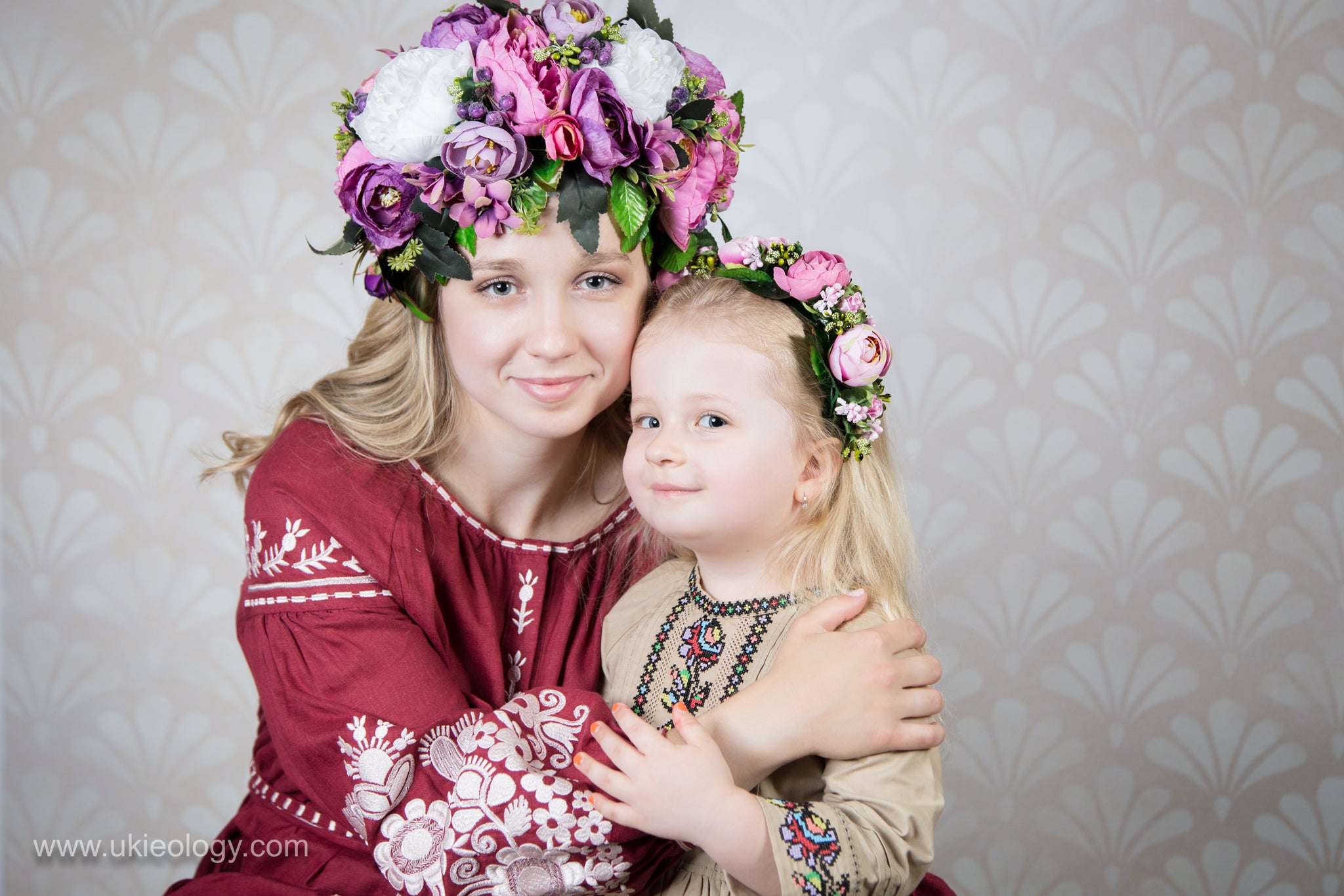
Ukrainian Vinok - when beauty and tradition intertwine
(translated from http://vsviti.com.ua/ukraine/76409)
Delicate flowers, herbs, colourful ribbons- vinok is one of the oldest symbols of Ukraine.
Described in songs and legends, Ukrainian vinok has a long history- first mentioned in Shumerian culture in XII-III BC. Viewed as a symbol of bright sky above the head of the one wearing it and seen as protector from evil spirits and illnesses. Our Ukrainian ancestors understood that the part of body responsible for thinking and creation was the head, and therefore created vinok-oberih to protect it from negative forces.

Flowers themselves had meaning: poppy- was a flower of dreams, beauty and youth; daisy-love, tenderness and faithfulness; sunflower-faithfulness and loyalty; cornflowers- humility; roses, mallows and peonies- faith, love and hope; kalyna- feminine beauty; lily- purity to name a few. To give vinok magical powers herbs such as sagebrush, would be intertwined among flowers; or leaves of oak as they symbolized bravery and strength. Perhaps the strongest talisman was and remains barvinok, symbol of immortality of the human soul and herb of love and feminine beauty.

There was also art and meaning behind the selection and quantity of ribbons in vinok. Up to 12 colours were used to embellish the head of a Ukrainian girl. Each colour had meaning and role as together they protected her hair from ill wishers. Ribbons were trimmed based on the length of the hair, and were just slightly longer than her kosa (braid). In the middle was bright brown ribbon- symbol of mother earth that feeds us, then on each side yellow ribbons -symbols of bright sun. Then bright and dark green- beauty and youth; baby blue and navy-sky and water; bright yellow-symbol of bread; purple- wisdom; magenta- sincerity; and rose, a symbol of wellness. If vinok had poppies, red ribbons were added as they symbolized magic and sadness. White ribbons were only added if they were embroidered, as plain white meant longing for someone who has passed away. Orphaned girls would add blue ribbons into their braids and vinoks.

The variety of Ukrainian vinky is impressive- more than 77 kinds! Additionally, depending on the region of Ukraine vinok had different names: in Podillya it was korobulya or lubok; in Chernihiv region-teremok; Hutsuls called it pletin’ or kosytsya. There were also more general names such as vinok, vyanok, perevyazka or chiltse.
First vinok for a little girl was made by her mother when she was 3 years old. Marigolds, daisies, barvinok and forgetmenots would be rinsed in morning dew and then hidden away in a chest. Then, on religious holiday of Transfiguration of the Lord, mother would gift a vinok to her daughter saying- “For healthy body-healthy soul!”. There were special vinky for age 4, 6, and 7- each with separate meaning and role. Teenage girls weaved vinky of love with daisies, cherry and apple blossoms, and kalyna in the middle, while engaged girl’s vinok contained barvinok, sage, mint and other medical herbs. Wedding vinok protected the bride from evil eyes and was made form barvinok, rose and sage, with red strings, pepper, little onions and coins added for extra protection. In some regions, it was the vinok that was thrown from the bride to her bridesmaids instead of the wedding bouquet.

Those unlucky in love weaved vinky of hope with poppies and cornflowers, while kozak might have been gifted vinok of faithfulness- to let them him know that his girl would wait for him.
There were also harvest vinky made from wheat sheafs, and an honour to wear such vinok was given to the most hardworking girl who was to get married soon. But no matter the name or the kind of vinok, they all have so much tradition, symbolism and meaning intertwined between the flowers and ribbons. And no matter the reason for weaving the vinok, it was always done with care and gentleness – after all vinok is the expression of love and respect to nature and your homeland!
This has been translated and interpreted from: (http://vsviti.com.ua/ukraine/76409)

